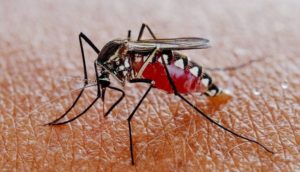World Malaria Report 2022
World Malaria Report 2022 was released by the World Health Organization (WHO) on December 8.
What is the World Malaria Report?
The WHO releases the World Malaria Report each year to provide in-depth information on the current trends regarding malaria control and elimination at the global, regional and national levels. The report highlights the progress towards the global targets and identifies opportunities and challenges for curbing and eliminating malaria.
The 2022 report has three new sections focusing on:
- Global and regional initiatives launched in 2021 and 2022
- Global malaria surveillance and national-level case studies on surveillance systems assessments
- Research and Development
It also includes an expanded section on the threats to malaria control, with a specific focus on the declining effectiveness of insecticide-treated mosquito nets.
What are the key findings of the World Malaria 2022 report?
- Despite the pandemic-led health crisis, high-burden malaria countries witnessed the stabilization of malaria cases and deaths in 2021.
- The number of deaths has declined from 625,000 in 2020 to 619,000 in 2021. However, the number is higher than the pre-pandemic levels (568,000 deaths in 2019).
- The number of malaria cases has witnessed an upward trend at a slow rate.
- These trends provide the evidence regarding the continued efficacy of national malaria programmes across the world.
- Among the 11 high-burden countries, 5 (the Democratic Republic of the Congo, Ghana, India, Niger, and Tanzania) have recorded a decline in the number of deaths caused by malaria. However, these countries continue to be among the highest contributors to the global malaria burden.
- Insecticide-treated bednet (ITN) is an important vector control tool in endemic countries. The number of ITNs distributed is similar to the pre-pandemic levels.
- In Africa, seasonal malaria chemoprevention (SMC) is recommended for protecting children against infectious disease. In 2021, the number of children who received the treatment increased when compared with the 2020 and 2019 figures.
- The report found consistency in the Intermittent preventive treatment in pregnancy (IPTP). Around 35 percent of pregnant women in 35 African countries received a full 3-dose regimen of IPTP in 2021 – a slight improvement from 32 percent in 2020.
- While progress has been made to mitigate malaria, Africa, which accounted for 95 percent of the cases and 96 percent of deaths at the global level in 2021, continues to be the worst affected.
- The COVID-19 pandemic has derailed the world’s progress towards the goal of completely eliminating malaria.
- Other challenges that are hindering the progress include mutating parasites that can evade rapid diagnostic tests, increasing resistance to anti-malarial drugs and the invasion of urban-adapted mosquitos that can be resistant to the majority of insecticides used in Africa.
- The WHO Global technical strategy for malaria 2016–2030 sought to reduce malaria case incidence and mortality rate by at least 40 percent by 2020, at least 75 percent by 2025 and at least 90 percent by 2030 against a 2015 baseline.
- Malaria case incidence was 48 percent off track in 2021. During that year, 59 cases per 1,000 people were at risk, higher than the target of 31. Death incidence was also 48 percent off track (14.8 in 2021 against a target of 7.8). If this trend persists, the world will be 88 percent off target in its fight to eliminate malaria.
Month: Current Affairs - December, 2022
Category: Reports & Indexes Current Affairs


